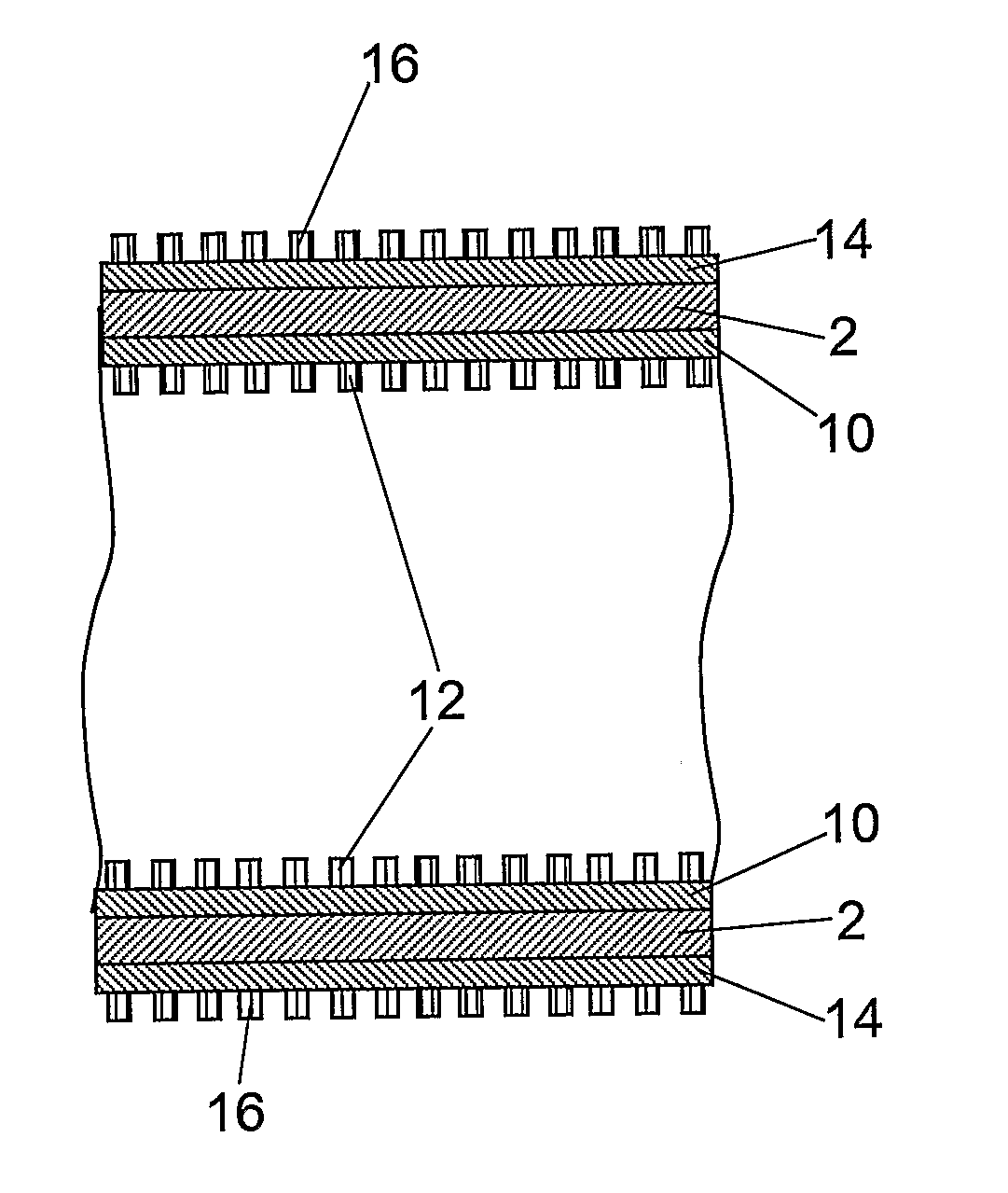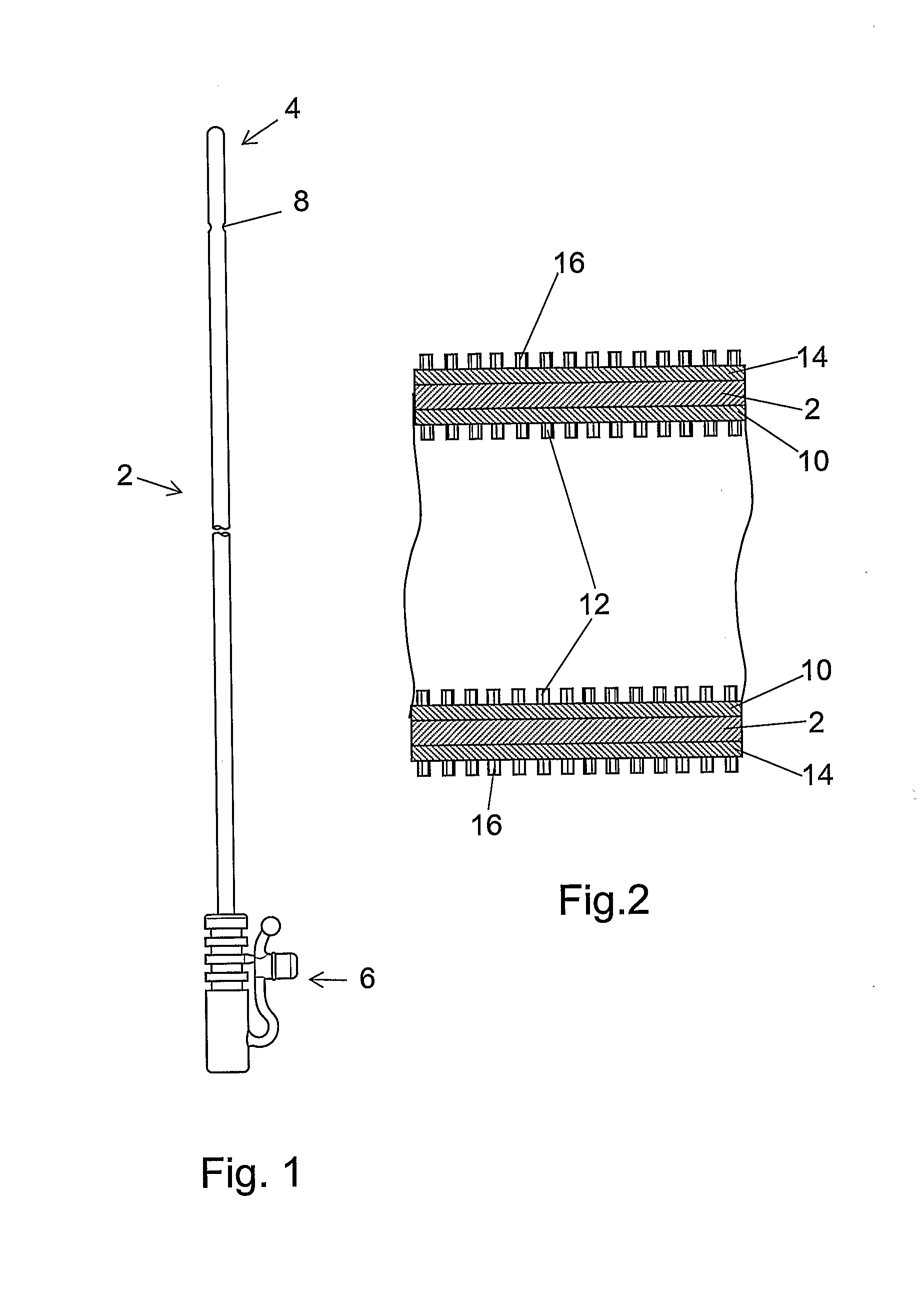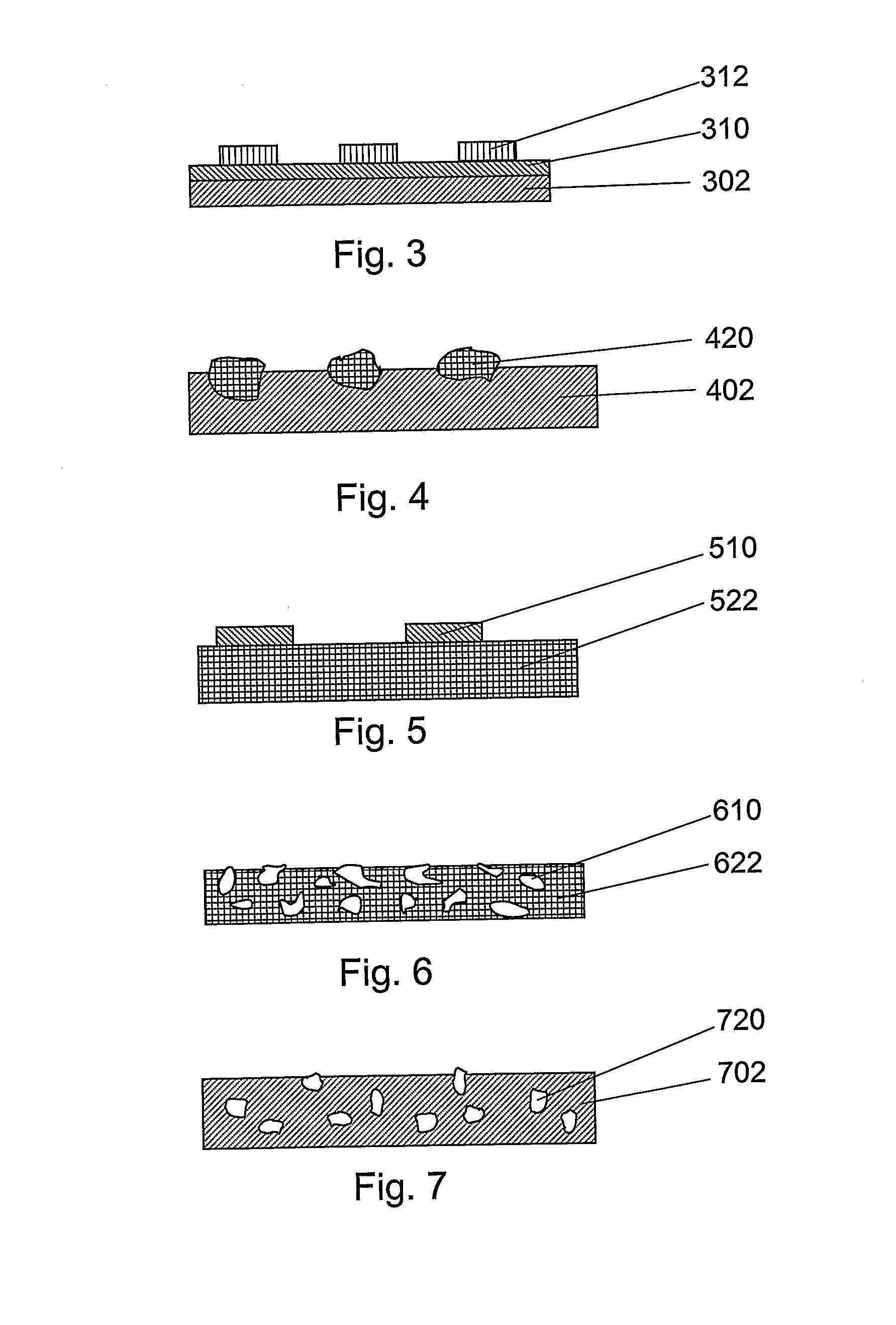Article to be Inserted in a Body Cavity Having Biologically Inhibiting Surfaces and Use and Preparation of the Article
a technology of biological inhibition and body cavity, applied in the field of articles to be inserted in human or animal body cavities, can solve the problems of affecting the overall cost of medical services, and involving a considerable risk of infection, etc., and achieves the effect of solving the above-mentioned problem in a single cost-effective solution, and using a noble metal such as platinum for a coating on a catheter or another article to be inserted in
- Summary
- Abstract
- Description
- Claims
- Application Information
AI Technical Summary
Benefits of technology
Problems solved by technology
Method used
Image
Examples
example 1
[0103]To estimate the actual potentials of some electrode materials in contact with urine as the electrolyte use was made of the following simulated standard urine solution for laboratory testing according to the European Standard EN 1616:1997 (Annex A.2.1):
weight (g)Urea25.0Sodium chloride9.0Disodium hydrogen orthophosphate, anhydrous2.5Ammonium chloride3.0Creatinine2.0Sodium sulfite, hydrated3.0Distilled waterq.s. to 1.0 litrepHapproximately 6.6
Electrochemical Measurements
[0104]The electrochemical measurements were performed in a 400 ml electrochemical cell with a massive cylindrical working electrode with a length of 1 cm and a diameter of 1 cm. A cylindrical counter electrode of platinum was used, having a diameter of 6.5 cm and a length of 8 cm. A standard calomel electrode (SCE) was used as reference electrode.
Results:
[0105]Using 400 ml of the simulated standard urine solution at 37° C. following Open Corrosion Potentials (OCP) vs. Standard Hydrogen Electrode (SHE) for differe...
example 2
[0112]The present example illustrates deposition of Ag on a fine powder of cathode material. Generally use of a very fine powder is advantageous in order to obtain a maximal surface area.
Types of Powders:
[0113]1: Graphite powder from Merck:
Product name: Graphite fine powder extra pure. Catalogue No. 104206. Cas-No: 7782-42-5
2: Magnetite powder from Sigma-Aldrich Denmark
Product name: Iron (II,III) oxide, powder, <5 micron, 98%. Product number: 310069. Cas-No: 1317-61-9
Deposition on Fe3O4 Powder:
[0114]Fe3O4 was dispersed in H2O, with concentration of approximately 600 g / L. Glucose was dissolved in H2O, with concentration of approximately 125 g / L, and subsequently added to the solution of dispersed Fe3O4 using a volume ratio of 2:3. Aqueous ammonia was added to a solution of 80 g / L AgNO3, this solution was added to the powder / glucose solution using a volume ratio of 3:5 under continuously stirring in minimum 20 min. The powder was separated by filtration of the slurry, and washed with ...
example 3
[0118]Particles of tungsten carbide (WC) with a particle size of 30-100 μm were deposited with Ag in a way similar to example 2. FIG. 13 shows a SEM image of the obtained powder. Analyses on different points on the surface confirm sufficiently irregular silver content throughout the surface.
PUM
| Property | Measurement | Unit |
|---|---|---|
| distance | aaaaa | aaaaa |
| conductive | aaaaa | aaaaa |
| conductivity | aaaaa | aaaaa |
Abstract
Description
Claims
Application Information
 Login to View More
Login to View More - R&D
- Intellectual Property
- Life Sciences
- Materials
- Tech Scout
- Unparalleled Data Quality
- Higher Quality Content
- 60% Fewer Hallucinations
Browse by: Latest US Patents, China's latest patents, Technical Efficacy Thesaurus, Application Domain, Technology Topic, Popular Technical Reports.
© 2025 PatSnap. All rights reserved.Legal|Privacy policy|Modern Slavery Act Transparency Statement|Sitemap|About US| Contact US: help@patsnap.com



